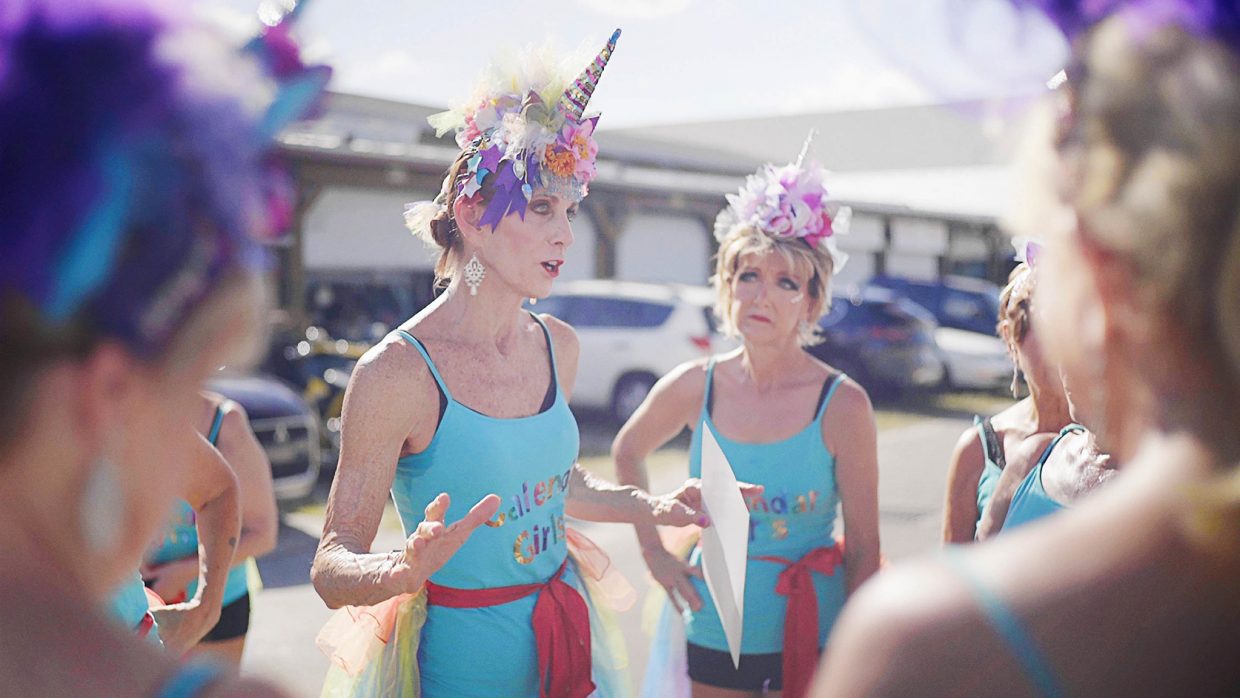 Back to selection
Back to selection
“In Every Situation We Were There as Persons—Persons That Happened to Have Cameras With Us”: DPs Love Martinsen & Maria Loohufvud on Calendar Girls
 A still from Calendar Girls (Photo: Love Martinsen)
A still from Calendar Girls (Photo: Love Martinsen) Calendar Girls takes its name from its subject, a Florida dance troupe consisting of women over 60 who perform at animal rescue center benefits, church fundraisers and local parades with unbounded and contagious enthusiasm. Below, Love Martinsen and Maria Loohufvud discuss how their intent in capturing the troupe informed their approach and how they managed to make the film on a shoestring budget.
Filmmaker: How and why did you wind up being the cinematographer of your film? What were the factors and attributes that led to your being hired for this job?
Loohufvid & Martinsen: This film is all about DIY. We are the directors, producers, cinematographers, editors, composers, choreographers. There wasn’t really a question to hire another cinematographer as we wanted to keep it small and do it ourselves.
Filmmaker: What were your artistic goals on this film, and how did you realize them? How did you want your cinematography to enhance the film’s storytelling and treatment of its characters?
Loohufvid & Martinsen: We wanted to capture the universe of the Calendar Girls—to really be within the group, not just looking at them from the outside. As directors and cinematographers, we were somehow a part of the group in every situation. We trusted our intuition and tried to capture every moment.
For the film’s choreographed dance scenes, the goal was to portray the women’s emotions through dance. We planned carefully before every session, but when filming we tried to not get stuck in our vision and improvised a lot to be able to really capture their feelings.
Filmmaker: Were there any specific influences on your cinematography, whether they be other films, or visual art, of photography, or something else?
Loohufvid & Martinsen: The Florida light.
Filmmaker: What were the biggest challenges posed by production to those goals?
Loohufvid & Martinsen: When we started we didn’t know which of the 30 Calendar Girls would be most interesting for the film. We filmed hundreds of hours. It was very time consuming, and in the beginning it was hard to know who to focus on.
Filmmaker: What camera did you shoot on? Why did you choose the camera that you did? What lenses did you use?
Loohufvid & Martinsen: We filmed with two Sony A7SII. One each. The lenses we used the most was a Voigtlander 40 mm and a vintage Tokina tele zoom lens.
The equipment was very light weight, which made us very flexible for any situation that came up. As this is a documentary, we had to be prepared for anything, any time.
Also, we didn’t want a big camera between us and the women being portrayed. We didn’t want that distance. In every situation we were there as persons—persons that happened to have cameras with us.
We did a lot of research before we started, and based on our budget and our demands on flexibility the Sony A7SII, paired with vintage lenses, had a nice cinematic feel that we really liked.
Filmmaker: Describe your approach to lighting.
Loohufvid & Martinsen: As this is a documentary, we just had to go with the flow. It’s natural natural light in every situation.
Filmmaker: What was the most difficult scene to realize and why? And how did you do it?
Loohufvid & Martinsen: All the dance scenes were very complicated. Even though we had planned everything and thought we had it covered, for most of the scenes we had to go back and reshoot because we wanted it to be even better.
Thank you Calendar Girls for always doing it ”just one more time” every time we asked for it.
Filmmaker: Finally, describe the finishing of the film. How much of your look was “baked in” versus realized in the DI?
Loohufvid & Martinsen: Early on we found a look that we really liked and that just stayed with us until the end.
TECH BOX
Film Title: Calendar Girls
Camera: Sony A7sII
Lenses: Voigtlander Nokton, a vintage Tokina zoom tele lens, Slr Magic.
Lighting: Natural light
Color Grading: Premiere and Da Vinci Resolve
